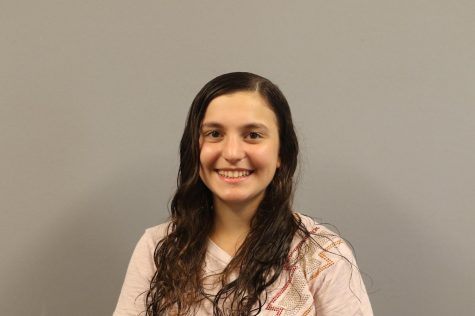Will there ever be a halt to traffic during lower school pickup?
Model Home Collaborates With Administration for Answers
Countless parents sit in their cars at a standstill on Webster Avenue, waiting and waiting for the line of traffic to budge so that they can pick up their kids. Despite various attempts to fix the problem of traffic surrounding lower school pickup, it still remains present today. On January 11, Assistant Principal Ruth Jurgensen tasked the six members of the upper school student government committee Model Home with brainstorming possible solutions to an issue that impacts everyone in the Parker community and in the surrounding neighborhood.
Most affected by the traffic are the parents of lower school students who pick their kids up on Parker’s Webster Avenue side. “I’ve basically been forced to park and come inside to pick up my kid,” Natalia Burgett, a Parker parent of three, said, “because of the traffic in the pickup line, and how untimely and frustrating the whole process can be.”
Even for non-Parker affiliated individuals, the issue has long been apparent. “I’ve noticed substantial traffic congestion during Parker pick-up on my way home from school, and have even had to circle the block upwards of ten times,” Hannah Sullivan, a Lincoln Park resident and DePaul law student, said, “until a parent with flashers retrieves their child from school.”
A primary issue is the sheer number of vehicles. At times there can be more than fifty cars in line. “There are more kids here, than there were last year than there were five years ago,” Middle School teacher and Parker parent Steven Files said. “The school is expanding, and that additional amount of kids does mean that there are more parents in the line, and the parents of younger students are often even more confused, causing chaos.”
This chaos is not helped by the cars that idly sit and take up space on already cramped streets. “People come and sit, and they double park, blocking the cars on Lincoln Park West,” Jurgensen said. “There is already so much man power out there, it’s unbelievable. We have even added an off duty officer, and personnel outside, and have also made Webster a one-way street twice a day. We intend to be good neighbors, so we really would like people to come closer to 3:10, but right now that is just not what’s happening.”
Sophomore and head of Model Home committee Jared Saef sees the problem. “Cars are lining up before 3:10 to pick up their lower schooler, which is clogging traffic, and taking away spaces from the neighborhood,” Saef said. “The administration has sent out various notes to the lower school community asking them not to arrive until after 3, but still cars are showing up at 2:40!”
“It’s so easy to multitask now, and people love sitting in the pick-up line because it’s quiet time, so what’s twenty minutes or thirty minutes of sitting in a line to a parent with a packed day,” Jurgensen said. “To them, I would say, ‘Please circle,’ but the problem is, you can’t multitask while you’re driving.”
In reference to why Jurgensen sought ideas from a group of students instead of teachers, Saef said, “I think that the students may offer a different perspective than the faculty.”
Jurgensen agreed. “The design thinking work the students do really applies to this situation,” she said. “I’m engaged with Model Home to see what we are missing here. I would love for Model Home to go outside and ask parents and guardians why they are in line so early and what communication we could send that would make them listen.”
Like Jurgensen, Files has been grappling with possible solutions to this problem. “There must be a multilateral solution, to address all sides of the issue,” Files said, “and that it could be beneficial to create a welcoming video to new Parker parents showing them the ropes of how pick up at Parker works, explaining where, and when parents need to be, and hopefully easing the confusion and traffic backup.”
Even with the added assistance from Model Home, Jurgensen realizes that this pick-up situation will not be solved overnight. “The first meeting with Model Home went really well,” Jurgensen said. “It was simply a brainstorming session. No solutions came from the meeting quite yet but I appreciate them thinking about this issue critically, and I look forward to our future meetings. If students cannot come up with something, then I know we have done it all.”







